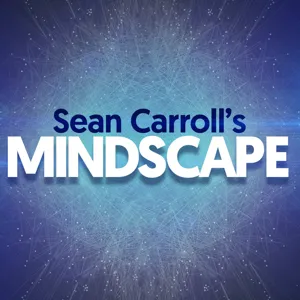Podcast Summary
Neurons called time cells help recall events in sequence: Time cells in our brains record experiences in order, enabling us to remember sequences of events in our lives
Our brains have special neurons called time cells, which help us remember events and experiences in the order they happened. These time cells put time stamps on various experiences, allowing us to recall them in sequence. For instance, when making coffee, our brains record the sequence of events, such as grinding the beans and brewing the coffee, thanks to the firing of time cells. This process enables us to remember the sequence of events in our lives, making it an essential aspect of our memory function. So, even if we lose track of time, our brains continue to monitor its passage.
How our brains remember the sequence of events: Brains have specialized cells called time cells that help recall memories in sequence, adding to our understanding of episodic memory
Our brains have specialized cells, known as time cells, which help us keep track of the sequence of events in our memories. This discovery, though it may sound like science fiction, is based on scientific research, particularly in the field of episodic memory. Episodic memories are those that recall personal experiences and events, and they consist of three parts: what happened, where it happened, and when it happened. The "what" is the event itself, while the "where" was figured out through the identification of place cells in the hippocampus of animals like rats. These cells fire every time an animal reaches a specific location. The "when," however, remained a mystery until more recent research. It turns out that our brains have time cells that fire in a specific order when we recall memories, allowing us to remember the sequence of events. This is a fascinating aspect of how our brains store and recall information. It's important to note that this research is ongoing, and there's still much to learn about the intricacies of our memory systems. However, the discovery of time cells provides a new perspective on how our brains keep track of time and help us make sense of our experiences.
Discovering Time Cells: Measuring Time in the Brain: Our brains have specialized cells, called time cells, that help us measure time and perceive its passage. These cells follow a logarithmic time scale, with each cell firing at a specific interval, and our ability to distinguish time decreases over its passage.
Our brains have specialized cells, called time cells, which help us measure and perceive the passage of time. These cells were first identified in rats in 2011 and later in humans in 2020. Time cells fire in a highly choreographed sequence, with each cell firing at a specific interval after an event. This sequence follows a logarithmic time scale, meaning our ability to distinguish time decreases as it passes. It's not like a stopwatch with regular ticks, but more like popcorn popping in hot oil, where the pace slows down over time. This discovery provides new insights into how our brains process and perceive time.
Our brains perceive time relatively, focusing on relationships between events rather than exact durations: Our brains use fewer time stamps to record events, focusing on their relationships instead of exact durations, allowing for efficient memory management and the ability to expand or compress our perception of time
Our brains don't record and process time in a linear or absolute way, but rather in a relative and proportional manner. This means that our brain uses fewer time stamps to record an event as it goes along, focusing more on the relationship between events rather than the exact duration. This system is likely an efficient way for our brains to manage large datasets of memories, allowing for compression and the ability to expand or compress our perception of time. This relative perception of time is useful in various ways, such as recognizing words spoken at different speeds and understanding the sequence of events. Additionally, our brains use time cells and place cells to organize episodic memories, allowing us to recall specific experiences and navigate our environment. Overall, the brain's approach to time is a fascinating and complex process that allows us to understand and manipulate the passage of time in unique ways.
Discovering the Interconnectedness of Time and Space Cells in the Brain: Research reveals that time and space cells in the brain, long thought to be distinct, are actually the same neurons in the hippocampus that can track both dimensions, challenging our understanding of navigation and information processing.
Time cells and place cells in the brain, which were previously believed to be distinct, are actually the same neurons that can track both space and time depending on the experimental setup. This discovery, made by researchers including Dr. Yuri Buzacki at New York University, challenges our understanding of how the brain navigates and processes information. The cells responsible for this dual functionality are found in the hippocampus, the brain's navigation center. Dr. Buzacki also noted that humans often use time and distance interchangeably, and our brains may need to navigate both dimensions to effectively function in the world. This revelation, while mind-boggling, underscores the complexity and interconnectedness of the brain. It's fascinating to ponder what Einstein might say about these findings, as they touch on the concepts of space and time continuum. Dr. Buzacki's research raises intriguing questions about the purpose and function of time cells in the brain.
Brain doesn't generate or sense time, but tracks changes: Time cells in the brain help us remember events and navigate the world, without measuring absolute time
The brain does not generate or sense time as we perceive it. Time cells in the brain, instead, help us track changes and maintain order in our memories. They don't measure absolute time. While our brains require external signals for precise timekeeping, historically, we have relied on natural and artificial signals like the sun, church bells, and marine chronometers. Nowadays, we have highly precise time signals from various sources. The importance of time cells lies in their role in helping us navigate the world and remember events, rather than measuring time itself.
NPR's Shortwave Podcast Production Team: A collaborative team of producers, fact-checkers, and coordinators ensure the accuracy and enjoyment of NPR's daily science podcast, Shortwave.
The production of the NPR daily science podcast, Shortwave, involves a collaborative effort from a diverse team. The podcast is produced by Rebecca Ramirez, fact-checked by Giselle Grayson and Britt Hansen, and coordinated by Brendan Krump. The team also includes Beth Donovan as the senior director and Anya Grundmann as the senior vice president of programming. Giselle Grayson, the only grown-up in the group, fact-checks the stories shared by Ramirez. Hansen also fact-checks and ensures the accuracy of the information presented. Krump coordinates the podcast, Donovan is the senior director, and Grundmann is the senior vice president. This team's collaboration results in the daily science podcast that listeners enjoy. Easycater supports this podcast and other NPR programming with their food solutions for companies, including employee meal plans, on-site staffing, concierge ordering support, nationwide restaurant coverage, and payment by invoice.






